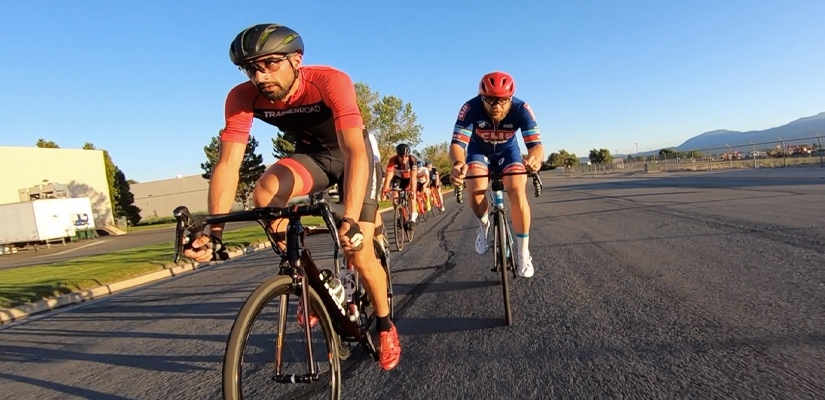How To: Breakaway Basics and Pro Tips

While every breakaway is going to be different, there are always things you can do to optimize your performance in a breakaway and increase the probability of a win.
For more on race tactics check out our Race Analysis YouTube Playlist.
Establishing a Gap
Establishing a gap is the hardest part of a breakaway, both physically and mentally. Although this seems obvious, the increase in power and mental focus necessary to put time and space between you and the rest of the field is substantial enough to pose a real risk to your chances of running out of energy too early in the race.
However, once you have this gap, it can be maintained by sustaining the same speed that the chase group is outputting. It’s tricky to remember this when you feel you are being chased down by a pack of cyclists and your fear response is kicking in, but remember, a gap only requires that you maintain the same speed of those behind you. Sustaining the same speed, opposed to continuously accelerating, will save you from blowing up and ultimately losing the gap you have created.
Timing Your Breakaway
Timing is critical for a successful breakaway. More often than not, your breakaway will be successful because the rest of the pack decided to not chase, instead of extraordinary fitness on your part. It’s all about finding that point where the field will consider your move “one step too far”, “too fast”, or “unattainable”.
The best way to do this is usually to attack from further back in the pack. This will make you less noticeable to the front of the pack, and give you enough time to get up to a speed that discourages the front riders from grabbing your wheel.
If other racers in your group are attempting to establish a breakaway, knowing when to follow is key. When deciding if you should follow an attack consider who is initiating the attack, and who is following the attacker. Are these athletes going to go out and blow up? Or is a strong competitor going out with this breakaway that could potentially go out and never come back? Knowing the racers in the breakaway, and their strengths in relation to the timing of the attack will help determine whether you should follow the lead or let them go out.
The Importance of Position
Once the gap has been established and the breakaway group has formed, choosing your position within the breakaway group is important. Where to sit in the group will depend on who is in the break, how they are riding, and what strategy they may be employing. These variables will help inform where and how you should be riding, and when you want to initiate your own attacks.
You will always want to be as efficient as possible when riding in a breakaway. Keeping this in mind, stay wary of riders that are going to wear you down and chip away at your power. If you find yourself in a breakaway with someone who surges a lot, or paces inconsistently, ideally you will not want to be sitting on this persons wheel. This person will wear you down with sporadic bursts.
Optimally, sitting behind someone who is able to maintain a consistent pace, a smooth pedal stroke and a good draft will ensure the most efficiency. Focusing on efficiency, and conserving energy will keep you fresher longer, and ready to attack when necessary.
Conclusion
Every breakaway is different and will ultimately be affected by the athletes you are racing with, the course you are on, and the conditions on race day. Keeping these variables in consideration, you can always optimize your performance in the breakaway by maintaining awareness of your competitors, focusing on efficiency, and knowing where you want to be in the breakaway.
Your success in a breakaway has more to do with being smart and efficient than brute strength or mere power. Smart racers make it into breakaways, and the smartest ones find a way to win from that break.
For more cycling training knowledge, listen to the Ask a Cycling Coach — the only podcast dedicated to making you a faster cyclist. New episodes are released weekly.